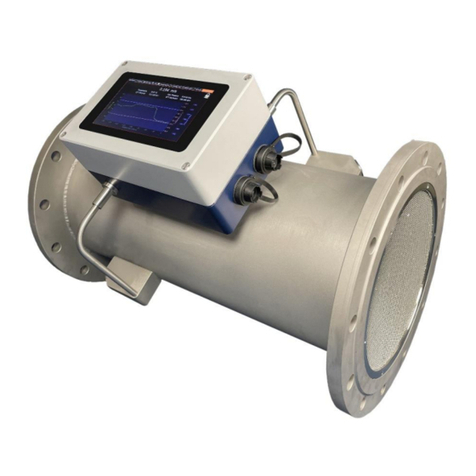
_________________________________________________________________________________________________
______________________________________________________________________________________
U426_flowtherm Ex_B_e_171206 www.hoentzsch.com 3/34
Contents
1General Information ...................................................................................................................4
2Scope of Delivery.......................................................................................................................4
2.1 Description, type plate.......................................................................................................4
3Technical Specifications ..............................................................................................................6
3.1 Operating conditions..........................................................................................................6
3.2 Housing and connection .....................................................................................................6
3.3 Electrical data...................................................................................................................6
3.4 Measurement uncertainty...................................................................................................7
4Initial Operation / Startup ...........................................................................................................7
4.1 Wiring diagram for the 8-pin connector plug .........................................................................7
4.2 Wiring diagrams for the 12-pin connector plug......................................................................8
4.2.1 Analog input 4-20 mA.............................................................................................8
4.2.2 Analog input 4-20 mA.............................................................................................8
4.2.3 Analog input 0-10 V................................................................................................8
5Operation .................................................................................................................................9
5.1 Key functions....................................................................................................................9
5.2 Setup menu after switch on..............................................................................................11
5.3 Parameter settings ..........................................................................................................13
5.3.1 FA - Basic settings................................................................................................13
5.3.2 FA - Measurement settings .................................................................................... 14
5.3.3 FA - Density correction .........................................................................................15
5.3.4 FA- Operating conditions .......................................................................................16
5.3.5 FA –Standard conditions ...................................................................................... 16
5.3.6 FA –Pairs of values ..............................................................................................16
5.3.7 VA –Basic settings...............................................................................................17
5.3.8 VA - Measurement settings.................................................................................... 17
5.3.9 VA –Operating conditions ..................................................................................... 18
5.3.10 VA –Standard conditions ...................................................................................... 18
5.3.11 VA –Pairs of values.............................................................................................. 19
5.3.12 TA –Basic settings ............................................................................................... 19
5.3.13 TA - Measurement settings....................................................................................20
5.3.14 TA –Standard conditions ...................................................................................... 21
5.3.15 TA - Pairs of values .............................................................................................. 21
5.3.16 PT100 - Unit ........................................................................................................21
5.3.17 Analog input ........................................................................................................22
5.3.18 Counter ..............................................................................................................22
5.3.19 Display ...............................................................................................................22
5.3.20 Long-term measurement....................................................................................... 24
5.3.21 Device ................................................................................................................ 26
5.3.22 Factory settings ................................................................................................... 26
5.3.23 Data logger ......................................................................................................... 26
5.3.24 Device status.......................................................................................................27
5.3.25 Profiles ............................................................................................................... 28
5.3.26 Key F3 - LM-Start.................................................................................................28
5.3.27 Key 4 Switch off / OFF (reset)................................................................................28
6Troubleshooting....................................................................................................................... 29
7Replacement Parts ................................................................................................................... 29
8Instruction Manual category 2G handheld unit flowtherm Ex .........................................................30
8.1 Apparatus ......................................................................................................................30
8.2 Safety Precautions .......................................................................................................... 30
8.2.1 General...............................................................................................................30
8.2.2 Use in explosive atmospheres ................................................................................ 30
8.3 Technical Data ................................................................................................................32
8.3.1 Elektrical Data ..................................................................................................... 32
8.4 Installation.....................................................................................................................33
8.5 Maintenance ...................................................................................................................33
9Declaration of conformity handheld unit flowtherm Ex Category 2G................................................ 34































